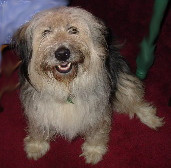 Englishman J. P. Blanchard couldn’t have known what he started in the mid-1700’s, when he took a small dog up in a hot air balloon and threw it out, with a rudimentary parachute attached. History didn’t record if the dog survived, but the parachute description doesn’t provide much room for optimism.
Englishman J. P. Blanchard couldn’t have known what he started in the mid-1700’s, when he took a small dog up in a hot air balloon and threw it out, with a rudimentary parachute attached. History didn’t record if the dog survived, but the parachute description doesn’t provide much room for optimism.
 A few years later, at 5:28 p.m. on October 22, 1797 in more adventurous France, Andre-Jacques Garnerin made the world’s first voluntary parachute jump, leaping from a hot air balloon at an altitude of
A few years later, at 5:28 p.m. on October 22, 1797 in more adventurous France, Andre-Jacques Garnerin made the world’s first voluntary parachute jump, leaping from a hot air balloon at an altitude of
about 2,000 feet.

 Gordon, the instructor, continued his torturous exit from the little car. He tottered back inside a time or two, but finally managed to extract himself, turning to face us, clutching a ski pole in each hand, to keep from falling. I can’t tell you what this did for my confidence.
Gordon, the instructor, continued his torturous exit from the little car. He tottered back inside a time or two, but finally managed to extract himself, turning to face us, clutching a ski pole in each hand, to keep from falling. I can’t tell you what this did for my confidence.
 Gordon is 79, recovering from knee replacement surgery; and, I was reassured to learn, a pioneer sky diver, closing in on 1600 jumps.
Gordon is 79, recovering from knee replacement surgery; and, I was reassured to learn, a pioneer sky diver, closing in on 1600 jumps.
 At that moment though, turning 60 and closing in on my first jump, seeing before me an instructor old enough to be my father didn’t fill me with cockeyed optimism. I’d expected to be the old man at this event, with youngsters helping me, but I suddenly felt like the new kid at summer camp.
At that moment though, turning 60 and closing in on my first jump, seeing before me an instructor old enough to be my father didn’t fill me with cockeyed optimism. I’d expected to be the old man at this event, with youngsters helping me, but I suddenly felt like the new kid at summer camp.
 In a brief classroom session, Gordon brightly talked about all the things that can go wrong and had me sign the most comprehensive release of liability ever written. Then, we hobbled over to Gordon’s heavily experienced Cessna 182 airplane, an overhead wing craft you’ve seen dozens of times, looping around summer skies with leisure pilots aboard.
In a brief classroom session, Gordon brightly talked about all the things that can go wrong and had me sign the most comprehensive release of liability ever written. Then, we hobbled over to Gordon’s heavily experienced Cessna 182 airplane, an overhead wing craft you’ve seen dozens of times, looping around summer skies with leisure pilots aboard.
 For the next hour, I practiced climbing from inside the plane onto a small platform welded above the wheel of the right landing gear. Standing on the platform, I was taught to hand walk out the strut, then lean, arch and fall to the side of the plane, missing the prop blast and extending the static line, so it can engage the primary chute, breaking your fall and preventing that unhealthy sudden stop at the end.
For the next hour, I practiced climbing from inside the plane onto a small platform welded above the wheel of the right landing gear. Standing on the platform, I was taught to hand walk out the strut, then lean, arch and fall to the side of the plane, missing the prop blast and extending the static line, so it can engage the primary chute, breaking your fall and preventing that unhealthy sudden stop at the end.
 Before you could shout “Geronimo,” ground school was done. I was crammed into the plane with Anthony, a more ambulatory instructor, and a pilot who reassuringly donned a parachute of his own. We taxied down the grass runway, turned to face the wind, engaged the throttle, released the brakes and took off into the sunset. I was aware of none of this, having my head between my legs.
Before you could shout “Geronimo,” ground school was done. I was crammed into the plane with Anthony, a more ambulatory instructor, and a pilot who reassuringly donned a parachute of his own. We taxied down the grass runway, turned to face the wind, engaged the throttle, released the brakes and took off into the sunset. I was aware of none of this, having my head between my legs.
 As we climbed to altitude, Anthony secured my static line and checked my gear. He was watching me carefully, later telling me he saw fear in my eyes.
As we climbed to altitude, Anthony secured my static line and checked my gear. He was watching me carefully, later telling me he saw fear in my eyes.
 “It wasn’t fear,” I told him, “it was terror.”
“It wasn’t fear,” I told him, “it was terror.”
 At 4,000 feet, the door of the plane flew open and there it was: nothing. Nothing for a long way down, where trees were toothpicks and people were gnats.
At 4,000 feet, the door of the plane flew open and there it was: nothing. Nothing for a long way down, where trees were toothpicks and people were gnats.
 Anthony shouted, “Do you want to jump?”
Anthony shouted, “Do you want to jump?”
 Foolishly, I replied, “Yes.”
Foolishly, I replied, “Yes.”
 “Climb out.”
“Climb out.”
 As I inched out the door, placing first one foot and then the other on the tiny platform, I wondered if I had the strength. The prop blast of chilly air was almost too much. My state of excitement was excruciating.
As I inched out the door, placing first one foot and then the other on the tiny platform, I wondered if I had the strength. The prop blast of chilly air was almost too much. My state of excitement was excruciating.
 After a few moments on the platform, I leapt into space, doing nothing the way I was taught. Inappropriately caught in the engine’s prop blast, I was blown into a full flip, before being jerked upright by the opening of the parachute.
After a few moments on the platform, I leapt into space, doing nothing the way I was taught. Inappropriately caught in the engine’s prop blast, I was blown into a full flip, before being jerked upright by the opening of the parachute.
 I looked up, saw the full canopy and realized that at that precise moment I was the happiest man on earth. My veins were filled with whitewater adrenalin.
I looked up, saw the full canopy and realized that at that precise moment I was the happiest man on earth. My veins were filled with whitewater adrenalin.
 The rest of the story is anti-climatic. I managed to miss the trees and land at a far corner of the drop zone. Glenna and Gordon drove out to get me in that beautiful old car.
The rest of the story is anti-climatic. I managed to miss the trees and land at a far corner of the drop zone. Glenna and Gordon drove out to get me in that beautiful old car.
A Once-In-My-Lifetime Leap
by Jim Sullins
Making last minute adjustments before the jump. On the left is my son T. J., who was a novice sky diver then, but today is closing in on 700 jumps. That's me, sweating in the white helmet, standing next to Anthony, the instructor who jumped with me. The pilot is on the right.
With great bravado and suppressed gut wrenching, I cram myself into the tiny airplane, flying backwards, the better to eject myself if I'm able. Note that the pilot is wearing a parachute, which I didn't find very reassuring.
Somebody took a picture of Glenna taking a picture of that tiny airplane struggling to get aloft with three big men, one of whom would soon be numb with fear. As you can see, on the right, my relaxed form below that lovely parachute, a few seconds before landing. Earth never felt so good.
On a recent winter evening, there was an aloof goose standing smack dab in the middle of a busy crossroads, having about as much impact on things as the armless traffic cop it seemed to be.
 This wasn’t one of those year-round Canadian geese we see so much. It was a large, light gray domestic goose, clean and fat. Obviously, somebody had an interest in seeing this big bird back where it belonged.
This wasn’t one of those year-round Canadian geese we see so much. It was a large, light gray domestic goose, clean and fat. Obviously, somebody had an interest in seeing this big bird back where it belonged.
 So, I stopped alongside the road, jumped from the car and chased the goose all around the intersection, lunging and grabbing as drivers watched, until I finally caught the critter amidst a small puff of snowy soft down. The goose uttered not a sound and I was wheezing and spewing.
So, I stopped alongside the road, jumped from the car and chased the goose all around the intersection, lunging and grabbing as drivers watched, until I finally caught the critter amidst a small puff of snowy soft down. The goose uttered not a sound and I was wheezing and spewing.
 An interested observer was a lady astride a horse, in her pasture nearby. She is often there with her daughter and others, exercising the horses.
An interested observer was a lady astride a horse, in her pasture nearby. She is often there with her daughter and others, exercising the horses.
 With a bemused expression, the lady said, “I know that goose and where it lives. Put it in here with me and I’ll see that it gets home.”
With a bemused expression, the lady said, “I know that goose and where it lives. Put it in here with me and I’ll see that it gets home.”
 Later, I spoke to the owner, who explained, “The goose’s name is Babe. It has been with us almost all its life, but something killed its companion awhile back. I think it’s lonely and is going out looking for a new friend.”
Later, I spoke to the owner, who explained, “The goose’s name is Babe. It has been with us almost all its life, but something killed its companion awhile back. I think it’s lonely and is going out looking for a new friend.”
 Anybody who has been around ducks and geese knows about their high level of intelligence, but perhaps nobody more than our family.
Anybody who has been around ducks and geese knows about their high level of intelligence, but perhaps nobody more than our family.
 In the 1980’s, in south Texas, there was a white domestic duck named Doc, after the veterinarian who saved her from a careless child at Easter time. Doc couldn’t walk, but she could scoot around in circles, using her one good leg for locomotion while dragging the crippled one behind. She swam in her kiddie pool the same way, in tight circles, softly quacking and frequently ducking her head, intuitively looking for food in the colorful plastic bottom.
In the 1980’s, in south Texas, there was a white domestic duck named Doc, after the veterinarian who saved her from a careless child at Easter time. Doc couldn’t walk, but she could scoot around in circles, using her one good leg for locomotion while dragging the crippled one behind. She swam in her kiddie pool the same way, in tight circles, softly quacking and frequently ducking her head, intuitively looking for food in the colorful plastic bottom.
 Doc’s companion was Sugar Ray Duck, an orphaned mallard hybrid, rescued at an early age from certain death at the bills of a brood of purebred mallards he tried to adopt. He earned his name after being watched enduring their attacks for several days. Eventually, he was snagged with a long handled crabbing net and introduced to Doc, in the kiddie pool.
Doc’s companion was Sugar Ray Duck, an orphaned mallard hybrid, rescued at an early age from certain death at the bills of a brood of purebred mallards he tried to adopt. He earned his name after being watched enduring their attacks for several days. Eventually, he was snagged with a long handled crabbing net and introduced to Doc, in the kiddie pool.
 It was love at first quack, as mature Doc and youthful Sugar Ray found in each other companionship and affection otherwise missing.
It was love at first quack, as mature Doc and youthful Sugar Ray found in each other companionship and affection otherwise missing.
 Their routine was simple. Doc spent days in the yard, alternately scooting or swimming in circles, eating cracked corn and napping in the magnolia shade. Sugar Ray swam in the wide, lazy creek behind the yard and sometimes flew far away, but late every afternoon he would return to Doc in the yard.
Their routine was simple. Doc spent days in the yard, alternately scooting or swimming in circles, eating cracked corn and napping in the magnolia shade. Sugar Ray swam in the wide, lazy creek behind the yard and sometimes flew far away, but late every afternoon he would return to Doc in the yard.
 At night, they slept in the laundry room, in a second kiddie pool, lined with old blankets, dishes of water and corn placed along the outer edge. On particularly eventful days, Sugar Ray would arrive home late, after Doc had been taken inside. On these evenings, Sugar would land in the yard, jump up the porch steps on wide webbed feet and, using his bill, knock on the door to be let in.
At night, they slept in the laundry room, in a second kiddie pool, lined with old blankets, dishes of water and corn placed along the outer edge. On particularly eventful days, Sugar Ray would arrive home late, after Doc had been taken inside. On these evenings, Sugar would land in the yard, jump up the porch steps on wide webbed feet and, using his bill, knock on the door to be let in.
 Tap. Tap. Tap. Pause. Tap. Tap. Tap.
Tap. Tap. Tap. Pause. Tap. Tap. Tap.
 The taps never varied and the sudden delight of opening the door to find an
The taps never varied and the sudden delight of opening the door to find an
inquiring drake never diminished. Sugar would enter without invitation, waddle across the kitchen, hop down two steps into the laundry room and join Doc in the pool, where a joyful reunion would ensue, as Sugar shared his adventurous day with his homebound companion.
 The vet had warned Doc’s caretakers to be sure she got plenty of exercise, as her crippled condition made her prone to pneumonia and other infections. Several times each day, Doc was dutifully held aloft and she would “fly” around the yard, quacking happily, energetically flapping her wings and creating a light shower of downy feathers.
The vet had warned Doc’s caretakers to be sure she got plenty of exercise, as her crippled condition made her prone to pneumonia and other infections. Several times each day, Doc was dutifully held aloft and she would “fly” around the yard, quacking happily, energetically flapping her wings and creating a light shower of downy feathers.
 Combined with the swimming and scooting, the exercise was enough for several years, but early one morning Doc was found dead in the laundry room bed, with Sugar Ray alongside her, quietly quacking a low, mournful melody.
Combined with the swimming and scooting, the exercise was enough for several years, but early one morning Doc was found dead in the laundry room bed, with Sugar Ray alongside her, quietly quacking a low, mournful melody.
 Sugar continued their routine alone for several weeks, each night tapping on the door and being let in, only to find his bed empty and lonely. After awhile, he started spending his nights on the creek, returning to the yard only to eat the cracked corn left there for him.
Sugar continued their routine alone for several weeks, each night tapping on the door and being let in, only to find his bed empty and lonely. After awhile, he started spending his nights on the creek, returning to the yard only to eat the cracked corn left there for him.
 One day, Sugar was seen swimming with three white ducks identical to Doc. These sightings became more frequent, and as time passed, Sugar gave up his daily ration of cracked corn and reverted to the natural life for which he was better suited, happily together with his new friends.
One day, Sugar was seen swimming with three white ducks identical to Doc. These sightings became more frequent, and as time passed, Sugar gave up his daily ration of cracked corn and reverted to the natural life for which he was better suited, happily together with his new friends.
 It’s easy to feel empathy for Babe the goose, especially when you know the story of Doc and Sugar Ray.
It’s easy to feel empathy for Babe the goose, especially when you know the story of Doc and Sugar Ray.
Tap. Tap. Tap. There's a duck at the
door and his girlfriend is in the house.
The Editor
Tales, Comments and Observations
By Jim Sullins
TigerGazette.com


